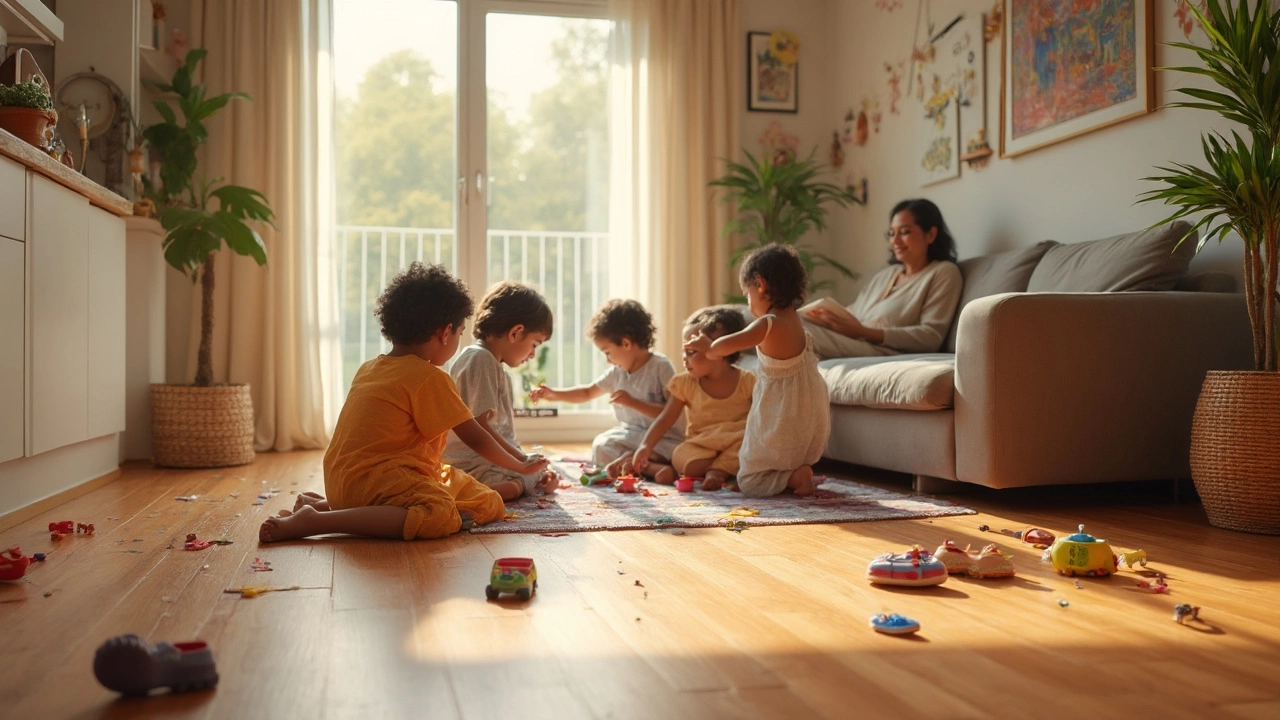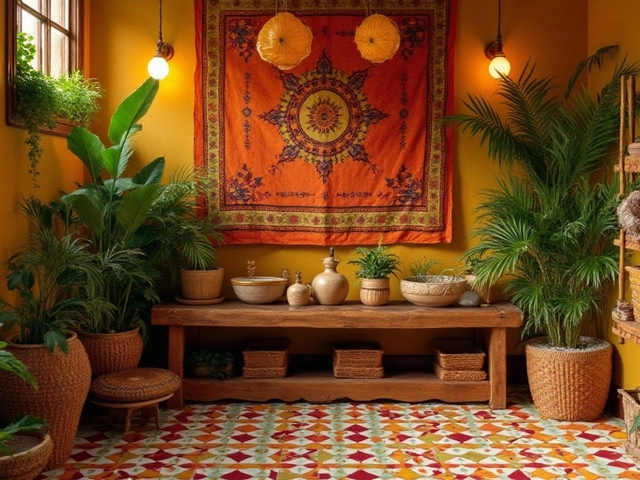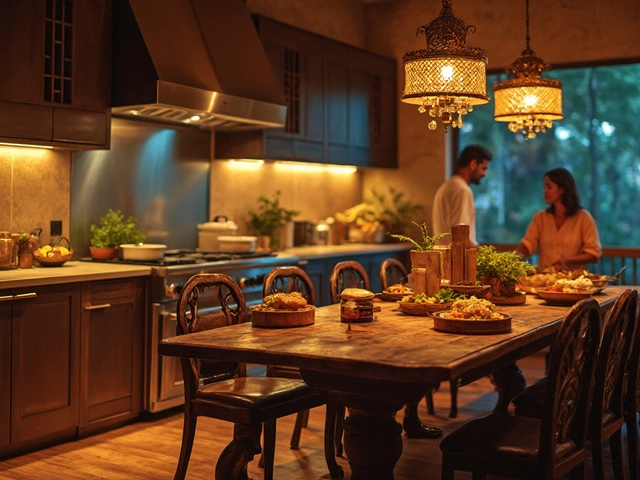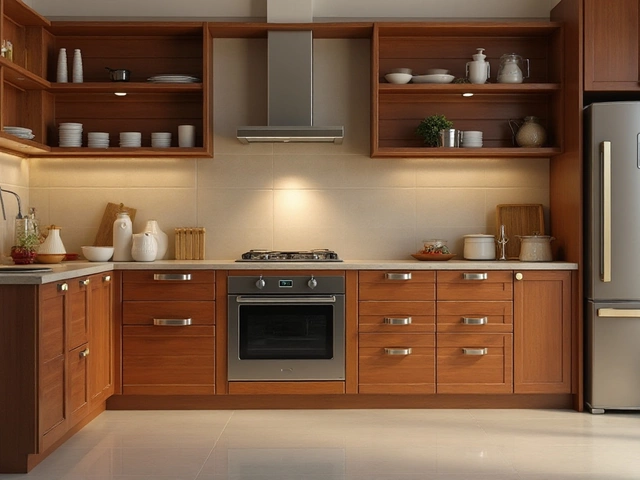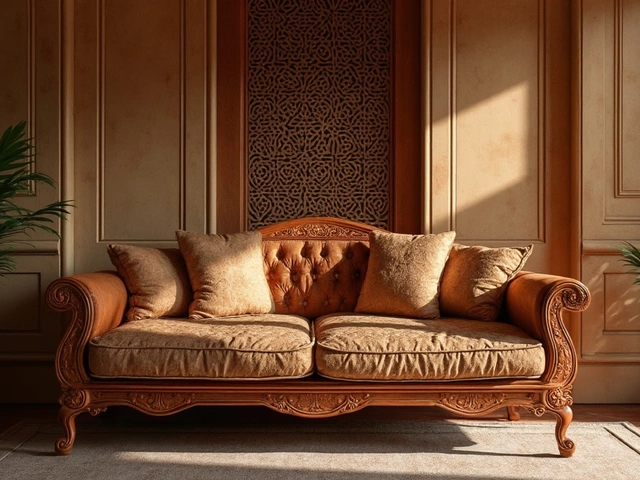If you’re tired of scrubbing floors and chasing every spill, you’re not alone. People want flooring that can take a beating, laugh off muddy shoes, and still look decent with almost no fuss. Nobody dreams about spending their Saturday buffing out scratches or sealing tiles.
The truth is, not every “low-maintenance” label means the same thing. Some floors only need a quick vacuum now and then. Others hide dirt shockingly well or bounce back from kid disasters without a sweat. But which floors actually save you the most time and hassle in the long run? That’s the question.
Let’s dig into what makes a floor truly easy to keep up. We’ll weigh the best contenders, talk about the kind of abuse they can handle, and throw in some honest tips you rarely hear at the flooring store. Want less cleaning, less regret, and more time just living on your floors? You’re in the right place.
- Defining Low Maintenance: What Matters Most?
- Top Contenders: Battle of the Floors
- Everyday Life Test: Kids, Pets, and Wet Shoes
- Upkeep Costs: Time and Money
- Tips for Picking the Right One for You
Defining Low Maintenance: What Matters Most?
People throw the term "lowest maintenance flooring" around a lot, but what does it really mean? It’s more than just not having to sweep every day. Low maintenance covers a few key things: easy cleaning, durability, and how well the floor hides daily wear.
If you’ve got little kids, like I do with Cormac, or a dog that loves to dig in the yard, you know the "toughness" of your floor matters as much as how easy it is to mop up. True low maintenance means:
- The floor resists stains, doesn’t soak up spills, and shrugs off scratches.
- No need for special cleaners or complicated routines—water and a mop, maybe the occasional vacuum.
- It holds up for years with almost zero effort from you.
- You don’t have to reseal, re-wax, or refinish every couple of years. Who has time for that?
Here are some facts that really matter: According to a 2023 home improvement survey, homeowners spent an average of just 15 minutes a week cleaning vinyl plank or tile floors. Compare that to carpet, which clocked closer to 40 minutes a week (think: spills, stains, vacuuming, pet hair—never ending).
| Flooring Type | Avg. Weekly Upkeep (minutes) |
|---|---|
| Vinyl Plank | 15 |
| Tile | 15 |
| Carpet | 40 |
| Hardwood | 25 |
Stain resistance and scratch-proofing matter, but also, how forgiving is the floor to daily life? If you have to chase after every crumb or panic at every dropped sippy cup, that's not low maintenance. In the end, durable floors that hide dirt and bounce back from chaos do most of the heavy lifting. The easiest floor is the one you never have to worry about.
Top Contenders: Battle of the Floors
When it comes to lowest maintenance flooring, a few materials consistently stand out—not just in theory, but in real homes that get messy fast. You’ll see these same names pop up from contractors, parents, and folks who just hate cleaning: luxury vinyl plank (LVP), tile (ceramic or porcelain), laminate, and to some extent, polished concrete. Let’s break down why these keep showing up at the top.
Luxury Vinyl Plank (LVP) is the king of "install it and forget about it." Real families with pets, muddy shoes, and Cormac’s level of chaos just wipe it down or vacuum. It doesn’t dent easily, shrugs off water, and the print hides a lot. LVP lasts for years and never needs waxing or refinishing. No joke—some brands claim up to 20 years of life with basic care.
Tile has been around forever for a reason. Both ceramic and porcelain tile offer insane durability and don’t stain. Drop spaghetti? No panic. Just wipe. As long as you seal the grout (which is basically a one-and-done job every 5 years), it holds up in bathrooms, kitchens, basements—anywhere you want clean floors with zero skimping. The only annoyance: grout lines can snag some grime, but a quick pass with a brush sorts it out.
Laminate flooring has stepped up big time. Modern options resist scratching and fading, which used to be the Achilles heel. It’s also easy to keep clean—dust mop or occasional damp mop, and you’re good. Just make sure not to flood it; standing water can sneak underneath and cause swelling.
Polished concrete isn’t just for garages anymore. If you want indestructible and totally chill on maintenance, this is it. Just sweep and mop, no special products needed. Spills, kid art disasters, puppy puddles—concrete ignores them all. It can feel cold, but with a rug or radiant heat, it’s tough to beat for low effort.
Here’s a quick look side-by-side:
| Material | Ease of Cleaning | Water Resistance | Scratch Resistance | Life Span (Years) |
|---|---|---|---|---|
| LVP | Very Easy | Excellent | Good | 15–20 |
| Tile | Easy | Excellent | Excellent | 20–50 |
| Laminate | Easy | Moderate | Good | 10–20 |
| Polished Concrete | Very Easy | Excellent | Excellent | 40+ |
Notice something? The most durable options also tend to be the easiest to live with. You don’t need fancy cleaners or special tools. For most families, these high-performing durable floors end up saving a ton of time and worry. If you’re after the simplest routine and the least regret, you want to stick with something from this list.
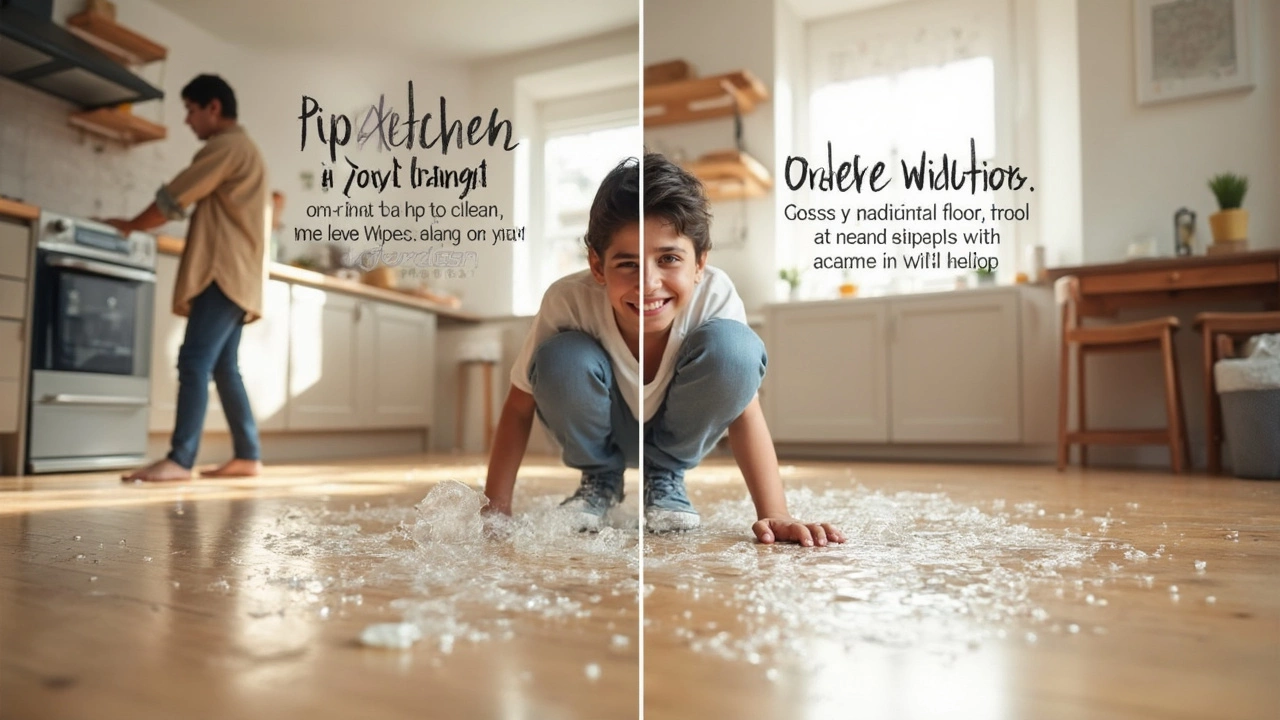
Everyday Life Test: Kids, Pets, and Wet Shoes
Let’s be honest—life gets messy. Whether it’s Cormac running through the house with muddy sneakers, the dog leaving a trail of fur, or someone forgetting to wipe up a dropped juice box, you need floors that aren’t fazed. Here’s how the top lowest maintenance flooring contenders really hold up when things get rough at home.
Luxury vinyl plank (LVP) crushes it with kids and pets. It’s waterproof, so spilled drinks and wet footprints aren’t a big deal. Even the claws of a rowdy dog don’t leave much of a mark. Most LVP brands offer a wear layer that shrugs off scuffs. Daily dirt gets hidden by the patterns, so you’re not forced to clean nonstop.
Tile (mainly porcelain and ceramic) is another superstar. Ever notice how it can handle almost anything? Permanent markers, pet accidents, puddles—it takes a lot to damage real tile. Grout lines used to be a pain, but now you can get stain-resistant grout, which means less scrubbing than back in the day.
Laminated flooring is tougher than it used to be, thanks to water-resistant upgrades, but don’t let a flood sit there. Kids forget things. Water on laminate might still seep into joints if you’re not quick about it. Scratching isn’t a huge deal with good coatings, but sharp claws might show up more over time.
Sheet vinyl is the ultimate old-school low-fuss floor. There are no seams for grime to hide in, so it’s simple—just mop up and you’re done. Pet messes? Wipe and forget. Plus, it’s warmer and less slippery than tile, which matters if you’ve got little ones or dogs tearing up and down the hall.
| Floor Type | Waterproof | Scratch-Resistant | Hides Dirt | Kid/Pet Friendly |
|---|---|---|---|---|
| Luxury Vinyl Plank | Yes | Yes | Yes | Yes |
| Porcelain/Ceramic Tile | Yes | Yes | Medium | Yes |
| Laminate | Some | Yes | Medium | Good |
| Sheet Vinyl | Yes | Good | Yes | Yes |
With lowest maintenance flooring, the bottom line is simple: the best floors handle whatever you throw at them. If you live in the real world—kids, muddy shoes, accidents—the right choice gives you more freedom and less stress.
Upkeep Costs: Time and Money
Before you jump into buying new floors, you’ll want to know how much effort—and cash—you’re really signing up for. Here’s where lowest maintenance flooring stands out: it’s not just about the price tag up front, but how much you’ll spend (or save) over years of cleaning, fixing, and stressing over messes.
Take vinyl plank flooring, for example. You can sweep or vacuum, mop with mild cleaner, and you’re done. No waxing, no sealing. On average, people spend less than 15 minutes a week maintaining vinyl, versus almost double that for carpet. Plus, if something nasty happens (think: a spilled cup of juice or worse), you just wipe it up—no stains, no worries.
Tile is another big player in the low-maintenance club. As long as you use grout sealer once in a blue moon (honestly, maybe every 2-3 years if you’re feeling ambitious), tile keeps its cool. Day-to-day, it just wants a sweep and a mop. If your kid drops a paintbrush, you can relax—paint won't get below the surface.
Laminate is easy on the wallet at first and doesn’t need fancy cleaning products. Don’t soak it with water, but a damp mop does the trick. The catch: if it gets scratched deep or soaks up water, repairs can add up fast.
Here’s a quick heads-up comparing those costs over 10 years.
| Floor Type | Average Yearly Upkeep Cost (Supplies & Labor) | Time Spent Weekly |
|---|---|---|
| Vinyl Plank | $20-$40 | ~15 min |
| Tile | $30-$60 | ~20 min |
| Laminate | $25-$55 | ~15 min |
| Carpet | $75-$150 | ~30 min |
Notice how durable floors like vinyl and tile crush carpet when it comes to both money and time? That’s why a lot of families and pet owners are ditching plush fibers for something they don’t have to babysit.
One tip: low-maintenance doesn’t mean zero effort. But picking smart can slash your cleaning time in half. And what’s that extra hour a week worth to you?

Tips for Picking the Right One for You
Picking the lowest maintenance flooring isn’t just about what looks good in the store. Think about your daily life, your mess-makers (kids, pets, clumsy relatives), and how much time you actually want to spend cleaning. No single floor fits everyone, so here’s how to land the one that fits your home and sanity.
- Know Your Trouble Zones: High-traffic spots like entryways or kitchens get hammered daily. For those, go for super-tough options like vinyl plank or tile. Carpets and softwood will show wear fast.
- Mess Factor: If you’re dealing with pet hair, mud, or sticky spills all the time, hard surfaces beat anything soft. Tile and vinyl plank just need a sweep and mop. Laminate is good unless it gets soaked often.
- Water Worries: Basements, bathrooms, or mudrooms need waterproof (not just water-resistant) floors. Stick with tile or the new, rigid core vinyl—it’s built to shrug off puddles. Avoid laminate where leaks happen, unless you love warping.
- Upfront vs. Down-the-Road Costs: Tile can cost more to install, but it could literally last decades with little work. Vinyl plank offers a cheaper install, usually under $3 per sq. ft. for materials, and almost no upkeep. Carpeting is cheapest up front but wears out faster and stains more.
- Looks Matter, But Maintenance Wins: Don't pick based on color alone. For easy cleaning, go with matte finishes and mid-tone shades that don’t show every crumb or smudge.
Here’s a quick-look table to compare common lowest maintenance flooring types on mess handling and upkeep:
| Floor Type | Upkeep Needed | Water Resistance | Durability |
|---|---|---|---|
| Vinyl Plank | Vacuum/mop | Fully waterproof | High |
| Tile | Vacuum/mop, seal grout | Fully waterproof | Super high |
| Laminate | Dry cloth/mop | Resistant, not waterproof | Medium |
| Carpet | Frequent vacuum, spot clean | Not water-friendly | Low (in busy areas) |
One last tip: bring home samples and try to stain or scratch them with stuff you use every day—like muddy sneakers or a cup of juice. Kids like Cormac can run wild during test week. You’ll see fast which floor stays looking normal without constant cleaning or babying.
